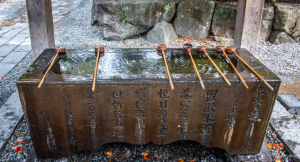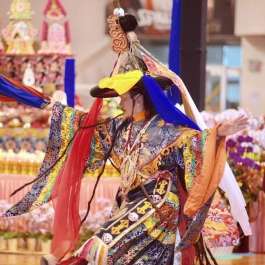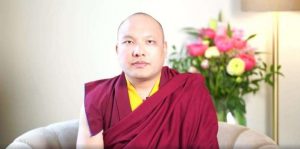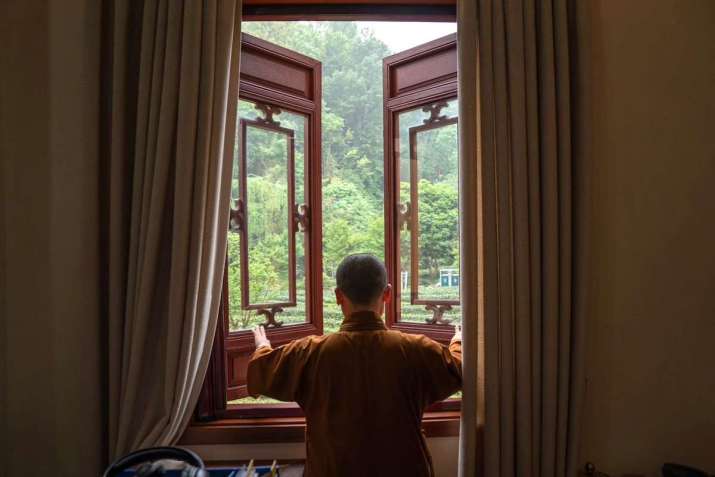
Burned-out corporate workers in the city of Hangzhou, sometimes known as the e-commerce capital of China, are turning to the Dharma for respite from the pressures of the modern-day city grind. For many, retreating to the historic Lingyin Temple in the nearby mountains to study Sanskrit offers relief from the capitalist rat race and an opportunity to slow down and reflect on the meaning of life.
At Lingyin Temple, which aptly translates as Temple of the Soul’s Retreat, shaven-headed monastics sit alongside lay students, all of whom have assembled to study Sanskrit, the ancient language of some of Buddhism’s most profound and beloved texts. Unlike learning to code or speak a foreign language, there’s no obvious professional or financial payoff, yet the lay students here are undeterred by the superficial lack of utility, finding a deeper satisfaction in their pursuit.
“I just come here out of interest and for some quality time,” said a student named Zhang Weifu, who works as a German translator in the city. “Hangzhou is booming, but this is a quiet place and it’s so relaxing to come here and study. Your heart rate slows down.” (Washington Post)
Located at the northwest of West Lake in Hangzhou’s Wulin Mountains, nestled between Feilai Mountain and Beigao Mountain, Lingyin, a temple in the Chan school of Buddhism, prides itself on being one of the oldest and most significant Buddhist temples in China, dated to the Eastern Jin dynasty (265–420). According to tradition, it was founded in 326 CE by Master Huili (fl. 320s CE), a monk from western India. During its peak under the Wuyue Kingdom (907–78), Lingyin was home to more than 3,000 monks, encompassing nine multi-story buildings, 72 halls, 18 pavilions, and some 1,300 dormitory rooms.
The temple has been rebuilt multiple times over its long history, and although was damaged during China’s Cultural revolution, it escaped wholesale destruction partly because of the protection of then-premier Zhou Enlai. The existing buildings in the temple complex are modern restorations of late Qing dynasty (1644–1911) architecture. Now one of the largest and wealthiest Buddhist temples in China, Lingyin Temple attracts thousands of visitors and Buddhist pilgrims every day.
“There are a lot of people who come here because they’re looking for inner peace,” said Lingyin Temple’s deputy abbot, Jun Heng. “They might be addicted to technology, or stuck in the rat race, or depressed by life. They are living with a lot of stress, so when they are up here with the Buddhist monks, they can find quiet. They are not necessarily Buddhists.” (Washington Post)
Despite increasingly tight state restrictions on religions practiced in China, including Buddhism, Lingyin Temple remains a popular pilgrimage destination and one of the state-sanctioned centers where Buddhism-related studies may be pursued and practiced.
Professor Li Wei, who began teaching Sanskrit at the Lingyin’s Buddhism Academy in 2015, said his first class was so popular that fewer than half of the course’s 380 applicants could be accepted—among them a 10-year-old child, a yoga teacher, an architect, and several retirees. Prof. Li noted that only 50 of the original students remained in the class by the end of the semester, and of them, only 20 signed up to continue in the following semester.
Nevertheless, those students with the determination to continue all say they have found their lives enriched in various ways. Twenty-six-year-old Ni Jiajia said taking the class has been a way for her to engage with the outside world and escape her otherwise reclusive lifestyle.
Meanwhile, 25-year-old law clerk Thomas Shen, said he enjoyed the course for the intellectual stimulation: “People have different hobbies. Some people might play basketball, or play PC games, or chase after pop stars. For me, learning languages is my hobby because I can understand different cultures and how people live.” (Washington Post)
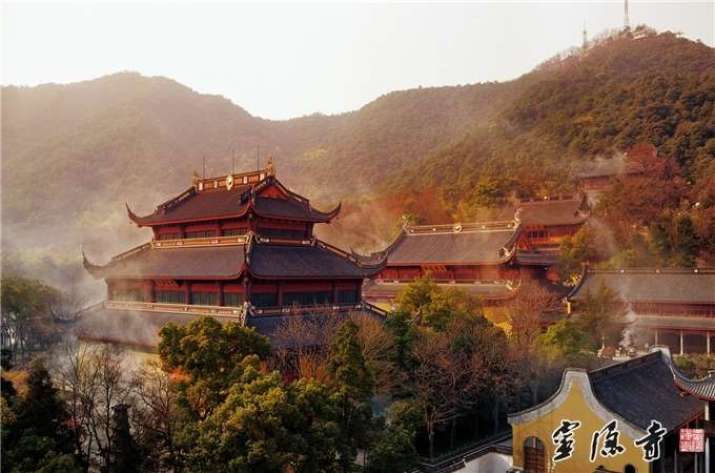
“In this program, I get to slow down and find a deeper meaning, reflect on what is important,” said Jenny Li, who works in international trade and has been studying Sanskrit for more than a year. (Washington Post)
Li added that when her friends ask her why she’s willing to spend time studying something with no obvious material benefit, she explains that she does so partly to develop mindfulness and awareness and partly because, as a Buddhist, she is seeking a deeper understanding of the ancient texts.
“Sometimes you need to do things for your inner needs,” she said. “For us in the millennial generation, we don’t need food or money as much as we need more spiritual sustenance.” (Washington Post)
See more
In a workaholic China, the stressed-out find a refuge with monks and Sanskrit (Washington Post)
In a workaholic China, the stressed-out find a refuge with monks, Sanskrit (SFGATE)
Lingyin Temple






